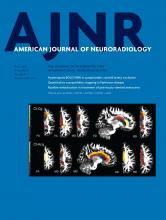Article Figures & Data
Tables
Updated minimum criteria for identification of cortical superficial siderosis and acute convexity subarachnoid hemorrhage in the context of CAA and small-vessel disease5
Criteria Well-defined, homogeneous hypointense curvilinear signal intensity (black) on T2*-GRE or SWI MRI in the superficial layers of the cerebral cortex, within the subarachnoid space, or in both
Blooming effect on T2*-GRE and SWI compared with T1- or T2-weighted sequences
Differentiation from multiple very superficial cortical cerebral microbleeds (small, generally 2–5 mm, well-defined, homogeneous, and either round or oval lesions, at least half surrounded by brain parenchyma)
If there is corresponding signal hyperintensity in the subarachnoid space on proton density–weighted or FLAIR sequences (or hyperdensity on CT, if available), the term “acute cSAH” should be used
Axial T1-weighted or FLAIR images should be used for anatomic confirmation of the gyral location of the signal hypointensities identified on T2*-GRE or SWI sequences
Absence of infratentorial (brain stem, cerebellum, spinal cord) siderosis
Ensure exclusion of potential hemorrhagic and nonhemorrhagic cSS mimics (eg, vessel flow voids, thrombosed vessels, petechial hemorrhagic transformation of infarcts, calcium deposits)
Consider all potential non-CAA secondary etiologies of cSS and acute cSAH
cSS should be categorized as focal or disseminated (eg, in line with the modified Boston criteria)
In each patient, the location (cerebral lobes and so forth) of cSS and the number of cerebral sulci affected can be recorded
Other relevant vascular neuroimaging lesions both remote from and in close proximity (eg, up to 1 cm) to cSS should be evaluated, using established standards (eg, cerebral microbleeds, acute small DWI lesions, and so forth)
Note:—GRE indicates gradient recalled-echo; cSAH, convexity SAH.












